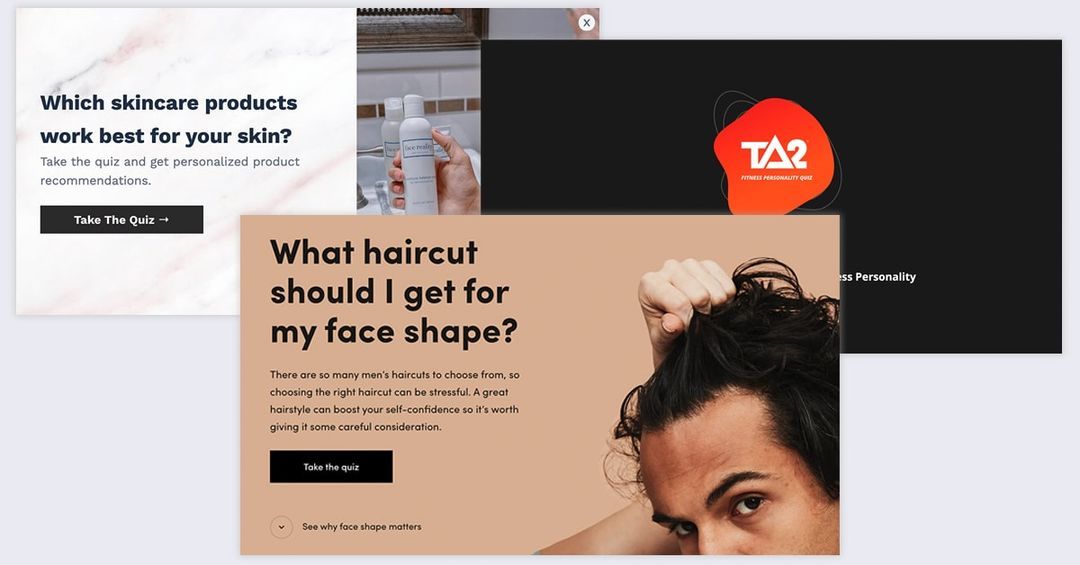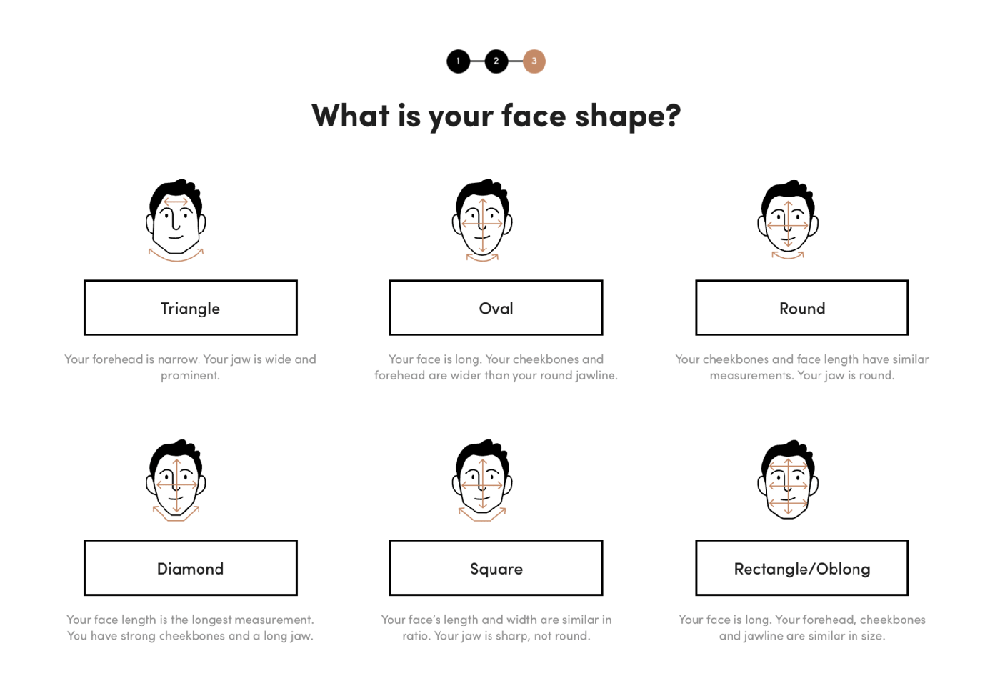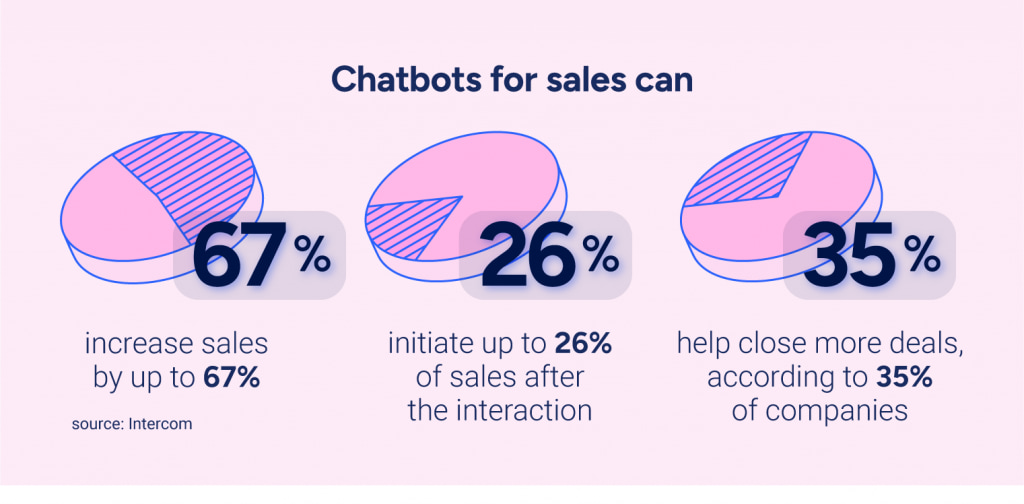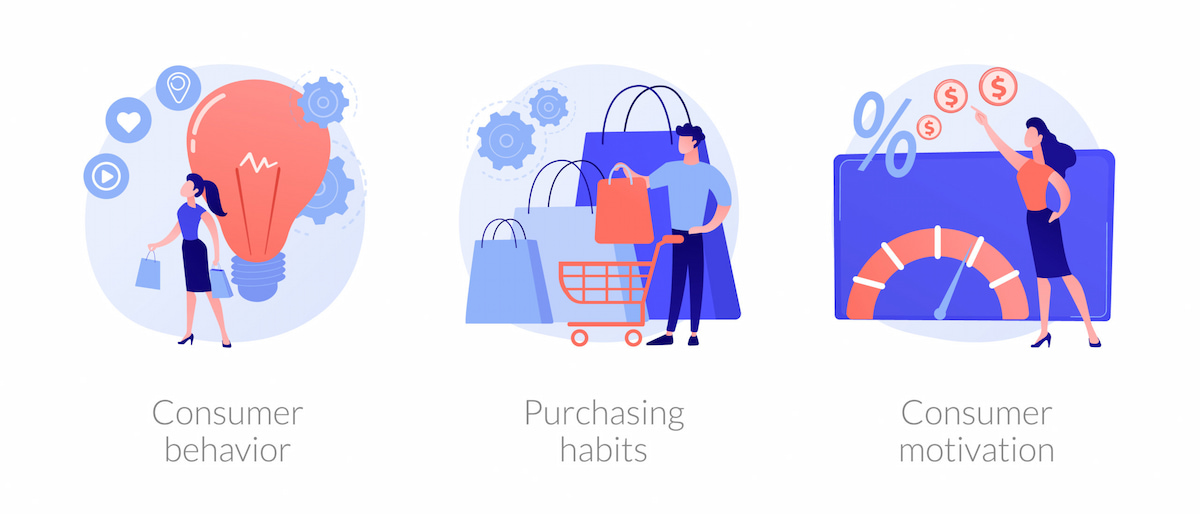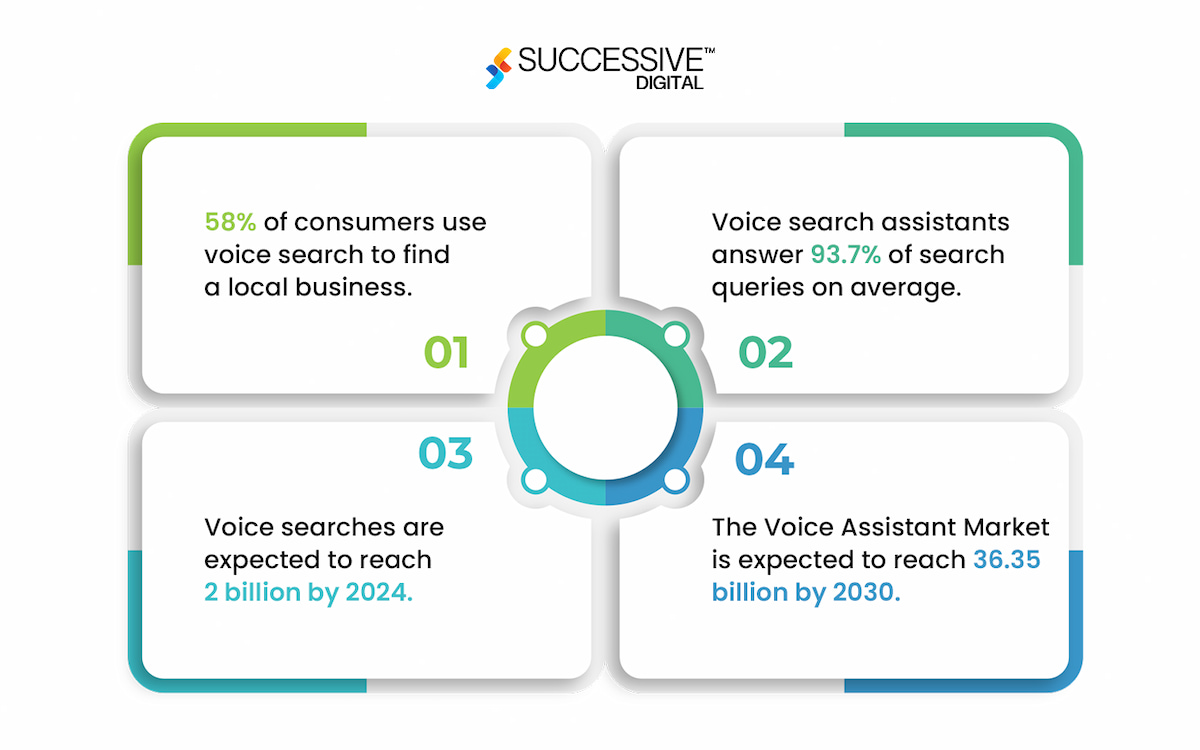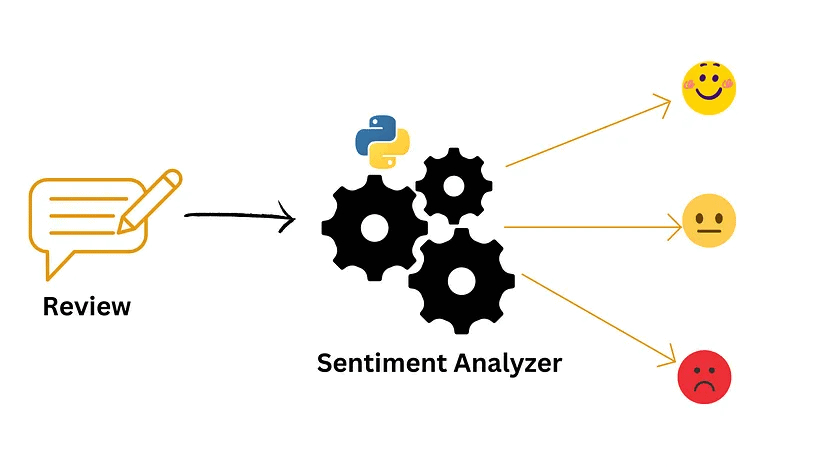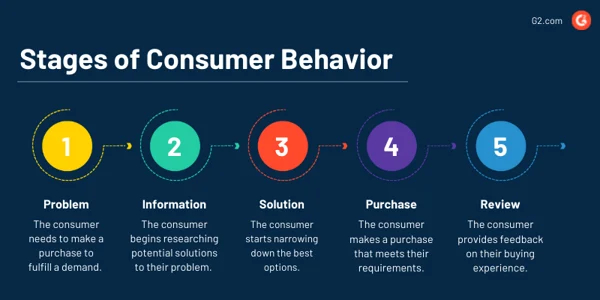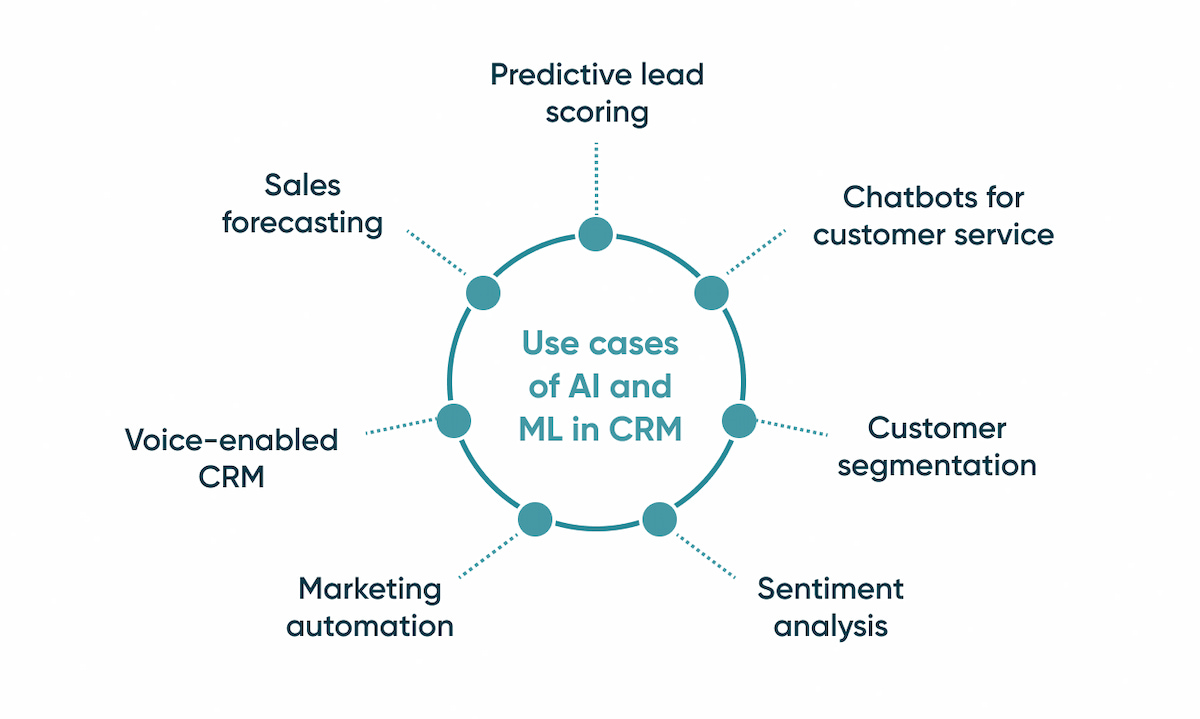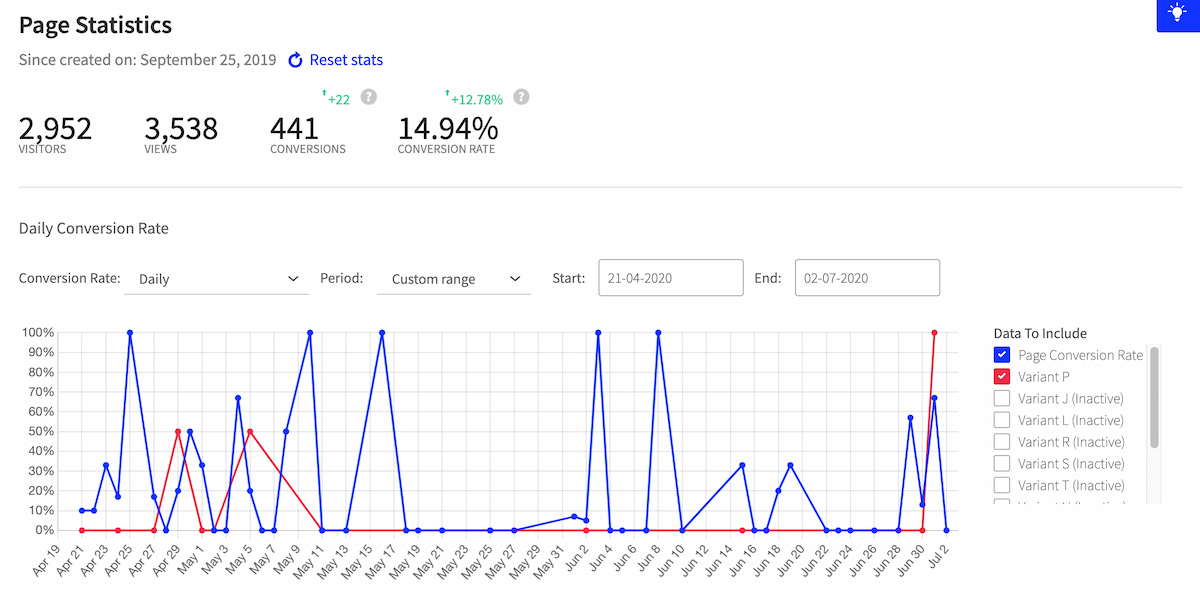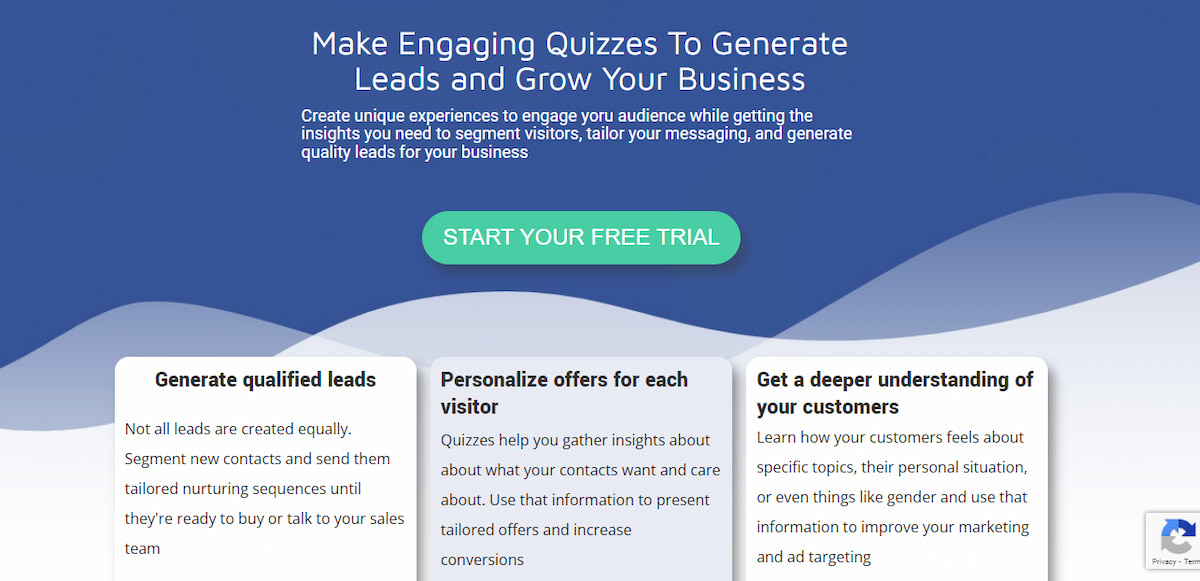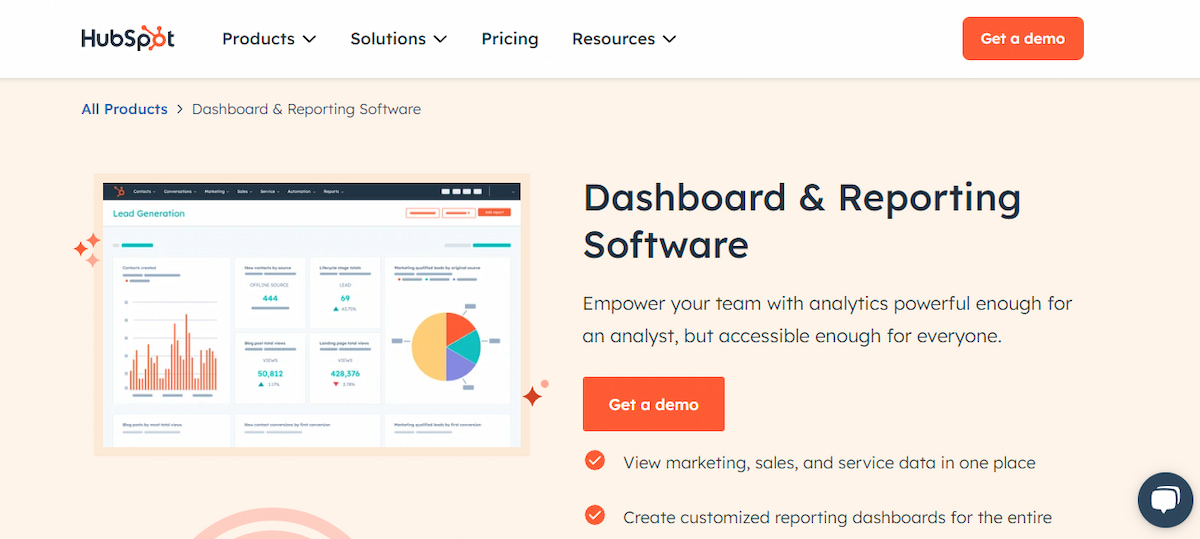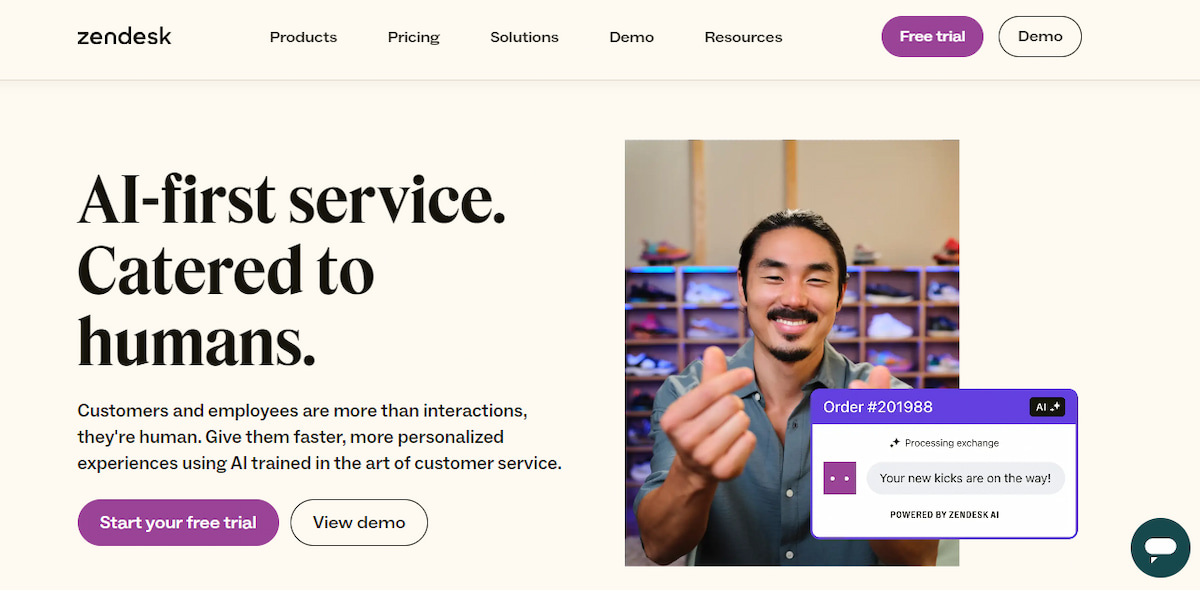A 50% uptick in leads and a 20% increase in sales sounds impressive, isn’t it? That’s where AI for customer engagement comes in handy to help you attract more qualified leads.
If you’re looking to leverage AI and want to figure out all the areas it can help you with, you are in the right place. We’ll walk you through the must-do strategies and steps to leverage AI so you can keep your customers coming back.
Let’s get into it.
7 Strategies You Can Use AI For Customer Engagement
Reflect on your recent customer feedback or support tickets and find strategies below that match your needs and can boost customer satisfaction by up to 25%.
Create Conversion-Focused Quizzes
Have you ever taken an engaging quiz to find out which product is best for you? Online ordering systems can do just that.
Conversion-focused quizzes do just that. They grab your customers’ attention with interesting questions and recommend personalized products.
For example, if a customer is looking for skincare, you can ask about their skin type and preferences to suggest variants of these natural body sugar scrubs that suit their needs. If they’re also interested in home heating solutions, you can inquire about their home size and energy efficiency goals to recommend the best heat pump options for their situation.
As you personalize your customer experiences with quizzes or popups, you can convert 30% of visitors into customers.
Here’s what you should consider when you create conversion quizzes:
- Keep the quiz short and simple. Don’t use too many technical terms;
- Use visuals to make it more engaging and make it more interactive;
- Create branching logic where subsequent questions depend on previous answers;
- Add a lead capture form at the end and offer exclusive deals to collect email addresses and drive more potential buyers.
It can look easy to create conversion quizzes, but it can really take up a lot of your time. Here at KyLeads, we provide ready-to-use popups and prebuilt quiz templates to fit your specific needs. Once the quiz is live, our built-in analytics lets you track how customers interact with your quizzes and fine-tune them for better results.
Use AI To Suggest Tailored Products Or Content
35% of what consumers purchase on Amazon comes from personalized recommendations. AI algorithms excel at predicting what you might like based on what you liked before. For instance, an AI dialer can optimize outbound calling campaigns by predicting the best times to contact leads.
So, if someone is looking for dress forms on sale, you can use AI to suggest other relevant suggestions, like fabric rolls or sewing kits.
To make this work, gather data and understand your customers’ needs and buying habits. Google Analytics can help you track what your customers view, search for, and purchase. Pay attention to patterns and preferences that can guide what products you can recommend best.
By diving into analytics dashboards, you’ll start seeing your customer data in a whole new light. These tools aren’t just numbers – they’re like a roadmap to understanding what your customers really want. Imagine being able to peek into your buyers’ minds, spotting trends before they even become obvious.
The magic happens when you can turn those insights into recommendations that feel so natural, your customers will wonder how you read their minds.
Use AI-Powered Chatbots To Quickly Answer Questions & Help Customers
AI chatbots are like having customer service agents available 24/7. They answer customer questions, resolve issues, and guide users through your site without any wait time. New technology in this space is even allowing customer service teams to deploy chatbot-powered answering services which allow customers to speak with an AI support agent. To date, chatbots help reduce response times by 80% and increase sales by 67%.
When it comes to customer service, AI chatbots have become real game-changers in ways nobody expected just a few years ago. These smart assistants have gotten surprisingly good at reading between the lines of what customers are asking for – they’ll switch up their tone depending on whether someone’s frustrated or just looking for quick info, and they’ve gotten pretty clever at spotting when someone might need help before they even ask.
The best part? They work alongside human support teams like a well-oiled machine, handling the everyday stuff so the support staff can tackle the trickier situations that need that personal touch.
Here’s how you can make the most out of chatbots:
- Select a chatbot platform that aligns with your business needs. Consider ease of integration, AI capabilities, and support for websites or social media;
- Decide which types of questions it should handle and what actions it should perform, like booking appointments or providing product information;
- Use a knowledge base software to create a knowledge base that the chatbot can draw from, including FAQs, product details, and troubleshooting guides;
- Use machine learning, natural language processing (NLP), and process mining to train the chatbot to analyze workflows, identify patterns, and answer different questions accurately;
- Make sure the chatbot can escalate complex issues to human agents in case customers need help if the chatbot can’t resolve their issues.
These days, more and more brands are jumping into WhatsApp marketing, using AI chatbots to connect with customers directly through the app. It makes things like sending personal offers, updating orders, or responding to questions easier. Plus, you’re reaching people right where they already are.
AI chatbots are changing everything these days. These digital helpers are so smart now that sometimes you can’t even tell you’re not talking to a real person. Companies are using them to handle everything from basic customer questions to helping people solve tricky problems without waiting on hold forever.
The world of AI chatbots is evolving faster than most people realize. Companies investing in AI app development create custom chatbot solutions that deliver unique competitive advantages in customer service automation.
Talk to any tech startup founder and they’ll rave about their custom chatbot solutions giving them an edge. These aren’t your average cookie-cutter bots – they’re built from the ground up to match each company’s unique style and customer needs.
Companies looking to gain this competitive advantage increasingly turn to specialized ai development services to create sophisticated, custom-built AI solutions that align with their specific business objectives.
Just last month, a local marketing agency saw their support team’s workload drop by half after launching their personalized bot, while customer satisfaction scores shot through the roof. The real game-changer? These smart assistants actually sound like they’re part of the team.
These digital assistants are getting smarter every day, learning to understand context and nuance in ways that feel almost magical. Companies are discovering that these tools aren’t just about answering basic questions – they’re becoming strategic partners in customer communication. And with strategic planning facilitation, businesses can align their AI investments with broader goals, ensuring long-term success.
With each conversation, these chatbots get a little bit better at reading between the lines, predicting what customers might need before they even ask, and delivering support that feels personal and immediate.
Use AI To Predict What Customers Might Purchase Next So You Can Be Ready
Predictive AI forecasts future customer behaviors based on past actions. Businesses that use predictive analytics are 5x times more likely to make faster decisions. To help you leverage data analytics, here’s what you need to do:
- Gather data on customer behaviors, purchase history, browsing patterns, and interactions. Factor these out when as you predict customer behavior:
- Seasonal trends;
- Browsing history;
- Cross-selling and upselling;
- Abandoned cart predictions;
- Customer Lifetime Value (CLV);
- Purchase frequency and preferences.
- Analyze past sales data to identify purchasing patterns and trends;
- Suggest products based on the items the customer has previously shown interest in;
- Track how customers interact with your website or app, including clicks, searches, and time spent on specific products;
- Segment customers into groups based on similar purchasing behaviors or preferences to find out what products appeal to each segment;
- Analyze customer reviews and feedback to gauge sentiment and preferences. This helps in understanding which products are likely to be up for trend.
Also, exploring the best AI apps for iPhone can help improve personalization and create a better customer experience.
Use AI Voice Assistants To Make It Easy To Talk & Get Things Done
AI voice assistants, like Apple Siri, Amazon Alexa, and Google Assistant, provide hands-free interactions using voice commands. Use them to set appointments, place orders, or answer questions as if it’s your personal assistant who’s always on call.
The evolution of AI voice technology is reshaping how we interact with devices, turning what once felt like sci-fi fantasy into everyday convenience. Powered by an AI voice generator, these assistants can understand context and respond with near-human precision, creating seamless interactions.
Imagine having a digital companion that understands context, picks up on subtle nuances, and responds with near-human precision – that’s the magic of modern AI voice assistants.
These aren’t just robotic response machines anymore; they’re intelligent conversationalists that learn your preferences, anticipate your needs, and make technology feel less like a tool and more like a personalized service tailored just for you.
For example, if you are looking to buy these types of muscle fit t-shirts or men’s polos online, you can simply instruct it like, “Hey Siri, show me the highest-rated men’s t-shirts under $50 on Amazon and guide me on how to order.” This level of convenience can greatly boost customer experiences and convenience because with voice assistant, you can:
- Facilitate easy transactions or schedule services to streamline customer experience;
- Provide quick answers to queries, reduce wait times, and keep interactions smooth;
- Use data to tailor responses based on customer preferences and previous interactions, making each conversation feel more relevant and engaging;
- Collect customer feedback in real-time using voice commands;
- Support customers who prefer voice interactions to make it easier for a wider audience to engage with your services.
Use AI To Check How Customers Feel From Their Messages & Posts
If you want to know how your customers truly feel about your products, you can get a sneak peek through their messages and social media posts. Think of it as a super-smart robot that can figure out if someone is happy, sad, or just okay based on what they type.
Let’s say you’re analyzing customer sentiment for a local long-time family brand like Chisos, a brand known for its stylish and durable footwear. Here’s how sentiment analysis provides a cue to improve your product offerings and increase satisfaction level:
- Positive Sentiment: Customers may express excitement about the Chisos boots’ excellent cushioning and support for long periods of wear. Positive reviews on social media platforms, like “Super comfy boots with rich leather and a fabulous fit!” can attract potential buyers and suggest a strong market fit with the potential for high sales;
- Negative Sentiment: If customers post complaints such as “I received the wrong size,” sentiment analysis would highlight these issues, which guides you to address the product flaws or improve your inventory system.
Use AI To Send Messages That Each Customer Is More Likely To Like & Act On
With artificial intelligence (AI) chatbots, you can now send messages that feel personal and relevant to each customer. Use AI to segment your audience based on different criteria, like demographics, purchase history, and buying behavior. Once you have the leads, make use of an engagement tool to reach out to them for personalized promotions.
To address these challenges, businesses often use end-to-end AI software development services, which provide practical solutions for incorporating advanced AI tools into their operations. These services focus on more than just implementation, offering structured strategies to help organizations integrate new technologies effectively.
Using these tools, companies can improve audience segmentation accuracy, create specific communication plans, and enhance customer engagement methods. Additionally, these services frequently include continued support and updates to ensure AI solutions remain aligned with changing business objectives and market needs.
Messaging platforms are great for engagement because people often read and respond to messages up to 98% faster than emails, with a rough 20-25% open rate. WhatsApp CRM is the most convenient solution to send targeted deals, order updates, and support messages right to your customers’ WhatsApp chats.
If you’re in the customer service, here are the sample of messages you can send:
Personalized Offer Message
“Hi [Customer Name], we’ve got an exclusive offer on [Related Product] just for you! Take 10% off your next order when you claim this coupon today.”
Support Follow-up Message
“Hello [Customer Name], how’s your [Product] working out? Is everything running smoothly now? If you need further help, we’re here for you. Just reply to this message!”
Reminder Message
“Hey [Customer Name], we haven’t heard from you in a while! Don’t miss out on our [Product], specially recommended for you. Here’s a 15% discount as a welcome-back treat.”
Feedback Request Message
“Hi [Customer Name], your opinion matters! After your recent purchase of [Product], we’d love to hear your thoughts. Leave us a quick review and enjoy a 10% discount on your next order!”
Upsell Message
Hi [Customer Name], good news! Our brand-new [Product] is now available. Upgrade today and be among the first to experience its exclusive features just for you!
If you need more help with this, KyLeads can help. We can create high-impact messages that not only engage your customers but also drive them to act and buy. Our popups and quizzes are tailored to suit what each customer likes, needs, and responds to, so you can connect with them in a way that feels more relevant and authentic.
5 Steps To Leverage AI To Boost Customer Engagement
As you read on, list down the most practical ways that resonate most with your business needs, and take note of the KPIs you need to track customer engagement levels.
Step 1: Analyze Customer Data & Behavior Patterns
Collect and analyze data on your customers—what they like, how they interact with your brand, and when they are most engaged. Generative AI tools, like ChatGPT, can help sift through this information to spot patterns and trends you might not notice on your own. A ChatGPT cheat sheet can further streamline your workflow by offering quick access to tips and commands, maximizing your efficiency with the tool.
Here’s how to leverage AI for better customer insights:
- Identify peak engagement times to make sure your offers reach the largest audience when they are most active;
- Discover which products or services resonate with different customer segments;
- Schedule posts, emails, or promotions when customers are most likely to respond.
Pro Tip: Use AI to find out when customers might stop interacting with your brand. If AI spots a drop in engagement, it can instantly send a special offer or reminder to keep them interested.
Step 2: Personalize Customer Interactions
Use AI to analyze what customers are most likely to buy next. It can be through browsing history, purchase behavior, and cart abandonment. So if someone purchases 2-3x multivitamins, like vitamin D, on Amazon, leverage AI to suggest dietary supplements like whey protein isolate to upsell or cross-sell product variants faster.
How can you do it?
Integrate your AI chatbots within your CRM or e-commerce platforms, like eBay, Temu, and Walmart. Track user behavior, like the time spent on specific product pages, frequently viewed items, and purchase frequency, to create highly targeted marketing strategies, like push notifications or email marketing campaigns for discounts.
Take Greenhouse Emporium, for example. They offer seasonal discounts and promotions during peak shopping seasons when they know customers get the best price available. Their hyper-personalized emails and special deals help them achieve 100% customer satisfaction.
Step 3: Integrate AI With Existing Systems
Integrate your existing automation systems to make sure the AI can access and analyze a set of your customer data. Take advantage of this to automate repetitive tasks, reduce manual effort, and free up time for more strategic outreach activities, but be sure to check these out:
- Assess if your existing systems support AI integration and look for APIs that can facilitate seamless communication between your platforms and AI tools;
- Select AI tools that align with your needs. If you’re focused on customer service, look for AI chatbots like Ada or virtual assistants;
- Work with your IT team or a tech consultant to have a smooth integration process;
- Test it on a smaller scale and tweak any issues in how the AI interacts with your existing systems before rolling out AI across the board;
- Continue to leverage and integrate your AI-powered tools to enhance efficiency by up to 80% for routine tasks or queries. Offer training sessions or resources to your team to help them get up to speed.
Step 4: Monitor & Analyze Performance
You can’t improve what you don’t measure. Implement any AI-driven strategies we mentioned above, and keep an eye on how they’re performing. Ask yourself: Are customers engaging more with your personalized content? Is your sales cycle getting shorter?
To help you figure it out, here’s what you need to do:
- Set up dashboards to track click-through rates, conversion rates, and response times and see what’s working and what’s not;
- Use AI to generate detailed reports on customer needs and anticipate customer behaviors;
- Implement AI to map out and monitor your customer journeys. Identify drop-off points and areas to improve customer expectations;
- Conduct A/B testing with different AI-driven strategies to see which ones yield the best results. Use these insights to refine your approach;
- Create feedback loops where insights from performance monitoring are used to continuously refine and enhance your AI-driven strategies.
Pro Tip: Use AI to spot unusual, sudden changes in your performance data. Quickly fix these problems before they affect customer loyalty.
Step 5: Monitor Trends & Iterate Your Strategies
Artificial intelligence (AI) is constantly evolving, and so is customer retention. What’s working today may not work tomorrow, which is why you need to iterate and adjust your strategies.
Picture customer retention as a high-stakes chess game where AI plays grandmaster, anticipating three moves ahead of your clients’ changing needs. While your competitors mindlessly blast promotional emails, smart algorithms craft personalized experiences that wrap around each customer like a favorite sweater – comfortable, familiar, irreplaceable.
Every interaction becomes a thread in a tapestry of loyalty, where customer retention transforms from a metric into a masterpiece of predictive engagement. By teaching AI to read the digital body language of your audience – their clicks, pauses, and purchases – you’re not just preventing exodus; you’re building emotional moats that make the thought of switching brands feel like abandoning a trusted friend.
Here’s how you can do it:
- Be agile in your approach. If a particular strategy isn’t working, be prepared to pivot and try new methods. Speed and flexibility are crucial in adapting to changes;
- Ask your customers what they think. Use the right type of surveys or direct feedback to understand their needs and make adjustments based on what they actually want;
- Compare your performance against industry standards and competitors to identify areas for improvement and adjust strategies as needed.
- Continuously monitor and analyze customer data. Look for shifts in customer behavior, preferences, and user feedback.
3 Best AI Platforms To Boost Ecommerce Customer Experience
Check out how effective your existing system or software is and see which AI solutions and features you need most from the 3 tools mentioned here.
KyLeads – Best For Personalized Quizzes To Generate Leads
KyLeads is an interactive quiz and popup builder that converts visitors into buyers. With an intuitive interface, our team makes it easy to design fully customizable quizzes and interactive content that resonates most with your brand.
Here’s how KyLeads can help you drive more leads:
- Build engaging quizzes that can convert up to 30% of website visitors into buyers;
- Use granular targeting and split testing to display messages to your target audience;
- Access detailed reports to analyze performance and gain valuable insights into your audience behavior to aid you with better marketing decisions and iterations;
- Integrate quizzes and pop-ups on various website platforms, including WordPress and Wix, without requiring you to have extensive technical knowledge.
HubSpot – Best for Integrated CRM & Sales Automation
HubSpot is known for its all-in-one CRM platform, which can help you manage your marketing, sales, and customer service in one place. It’s simple and user-friendly design makes it easy to track your customer interactions, automate marketing tasks, and analyze results.
Here’s how HubSpot can help keep your customers engaged:
- Assign leads to sales reps automatically;
- Qualify and score leads based on engagement;
- Send personalized email newsletters and drip campaigns;
- Send a trial extension to users who haven’t converted yet;
- Track key metrics like traffic, demographics, and customer acquisition cost.
Zendesk – Best for Multi-Channel Customer Support & Service
Zendesk is a leading customer service platform with tools to manage and enhance your customer relationships. It can handle customer inquiries, offer live chat support, and track service quality.
Here’s how Zendesk makes your workflow a lot easier:
- Provide instant, real-time live chat and messaging support;
- Monitor and improve service quality with detailed support analytics;
- Automate routine tasks to speed up responses and reduce manual work;
- Manage customer support with a ticketing system that keeps everything organized.
Conclusion
As you plan to leverage AI for customer engagement, consider what specific aspects you want to improve. Are you looking to use surveys to boost SEO, analyze engagement metrics, or personalize communications at scale?
If you don’t have the time or skills to do it just yet, KyLeads is happy to help. Our team will help you create stunning popups and quizzes that convert and offer insightful reports to optimize your strategy. Sign up for our 14-day free trial today to see how lead-driven our solution is.
Author Bio:
Burkhard Berger is the founder of Novum™. He helps innovative B2B companies implement modern SEO strategies to scale their organic traffic to 1,000,000+ visitors per month. Curious about what your true traffic potential is?
Gravatar: [email protected]
